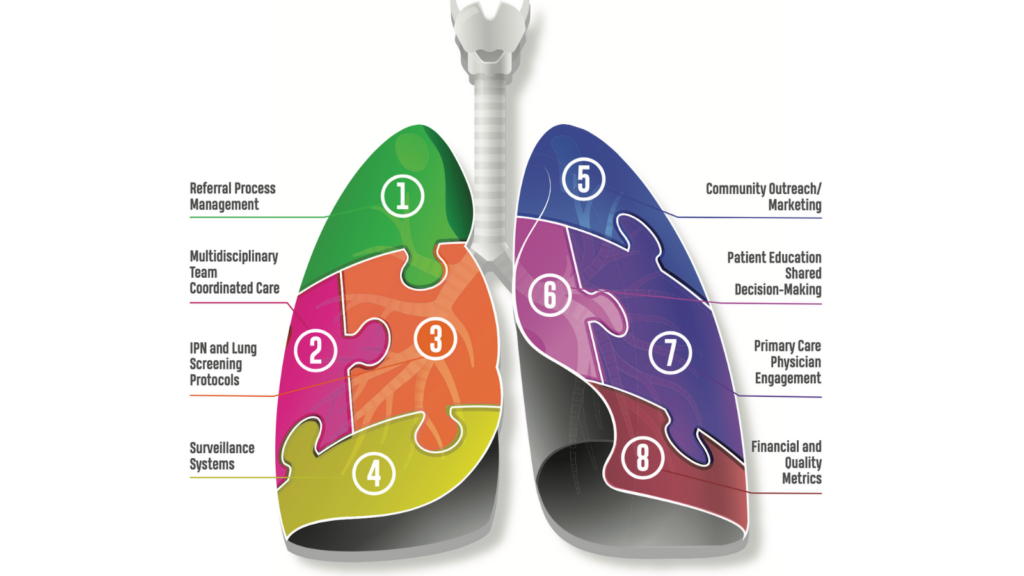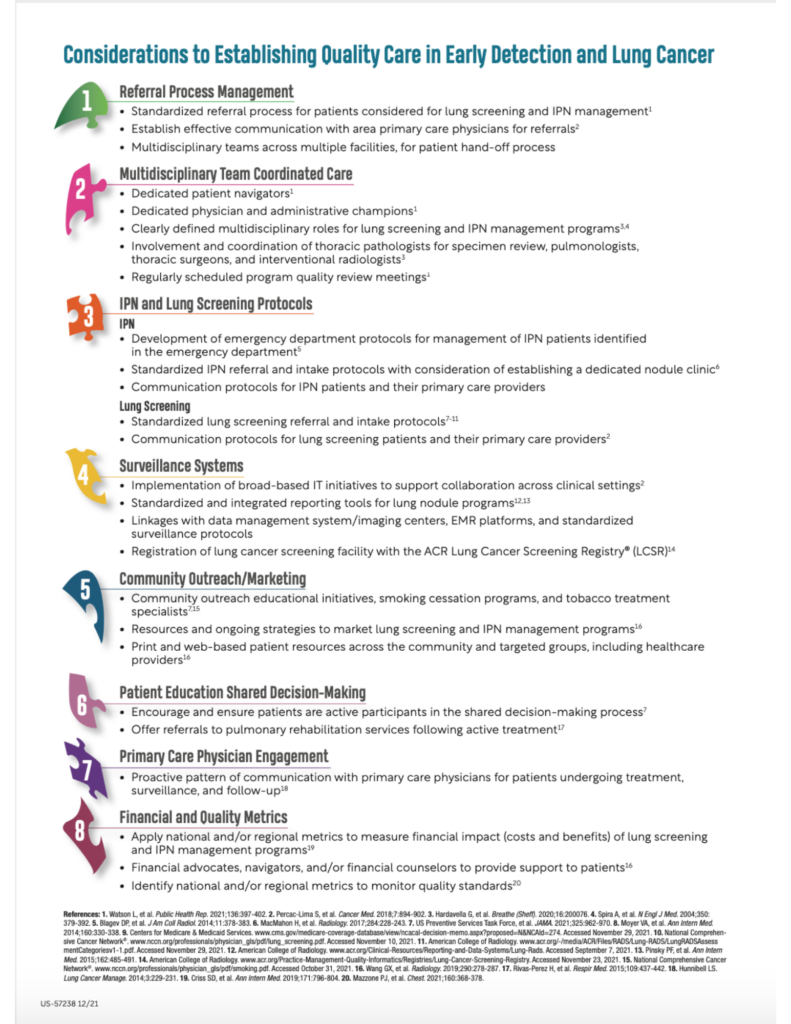Thynk Health’s Vice President of Strategic Partnerships & Clinical Liaison, Kim Parham, RN, BSN, CN-BN contributed to the following article in the Journal of Oncology, Navigation and Survivorship.
February 2022 Vol 13, No 2
Lung cancer, which includes both non–small-cell lung cancer (NSCLC) and small-cell lung cancer (SCLC), is the second most commonly diagnosed cancer in both men and women. NSCLC comprises approximately 84% of all lung cancers.1 According to the National Cancer Institute Surveillance, Epidemiology, and End Results Program, there were an estimated 235,760 new cases of lung cancer diagnosed during 2021, with an estimated 131,880 attributable deaths. These numbers equate to approximately 12% and 22% of all cancers, respectively.2 The overall 5-year survival rate of lung cancer was 21% from 2010 to 2016.3 Notably, early-stage lung cancer has a better prognosis and is often more responsive to treatment than those identified at a more advanced stage.4



